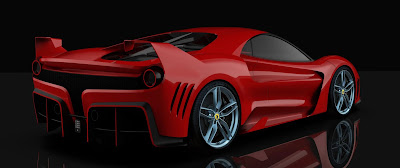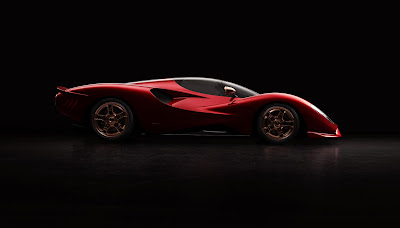It seems that the partnership between Aston Martin and Zagato is getting more intimate. Recorded since the 1950s, the two companies collaborated to build extraordinary vehicles. But now the pair's latest project could be among their best. Recently the Aston Martin presented a more detailed rendering of their upcoming models named the Aston Martin DBS GT Zagato and classic Aston Martin DB4 GT Zagato continuation. And both models are ready to be produced in the next few months..
 |
| Latest rendering images of Aston Martin DBS GT Zagato and DB4 GT Zagato continuation. (Picture from: http://bit.ly/2XzLaa9) |
 These new renderings are an upgrade over what the company released earlier in March. Here, we can see the the Superleggera-based DBS GT Zagato borrows the same general form as its production siblings, but now with a more prominent grille to give way to the Aston's massive twin-turbo 5.2-liter V12 engine to be laid down under the hood.
These new renderings are an upgrade over what the company released earlier in March. Here, we can see the the Superleggera-based DBS GT Zagato borrows the same general form as its production siblings, but now with a more prominent grille to give way to the Aston's massive twin-turbo 5.2-liter V12 engine to be laid down under the hood.
Assuming the same power setup carries over, the DBS GT Zagato can have 715 horsepower (553 kilowatts) and torque of 663 pound-feet (900 Newton-meters) on tap. Additional upgrades can be seen in the slimmer headlights, A more defined hood line, and gold-tinged 20-spoke wheels.
 |
| Latest rendering images of Aston Martin DBS GT Zagato and DB4 GT Zagato continuation. (Picture from: http://bit.ly/2XzLaa9) |
According to the Chief Creative Officer of the Aston Martin Lagonda, Marek Reichman said that the car is not only focused around beauty but drama too. He further said, the dynamic grille gives Aston Martin an opportunity to provide the car with two very different identities. When parked, DBS GT Zagato will almost look like it's resting, but with the rear of the car still looking muscular and ready for action.
 |
| Latest rendering images of Aston Martin DBS GT Zagato and DB4 GT Zagato continuation. (Picture from: http://bit.ly/2XzLaa9) |
The Aston Martin DB4 GT Zagato continuation model will join the DBS GT Zagato production, both available in 2020. The first comes full of classic displays, then a straight-six engine capable to produce 380 hp (283 kW) of power, a four-speed manual transmission system with a limited-slip differential, and power in the rear wheels.
Reichman added that it was important for him and their team to deliver something as beautiful as the original DB4 GT Zagato and he felt that they had achieved it with this model and he couldn't wait to see it in metal.
Both of these beauties will go on sale next year but their population will be limited. The British premium auto company says just 19 samples will be made for worldwide at a cost of around £6 million ($7.5 million) for the pair. *** [EKA | FROM VARIOUS SOURCES | MOTOR1 | THISMONEY]
Note: This blog can be accessed via your smart phone.





















